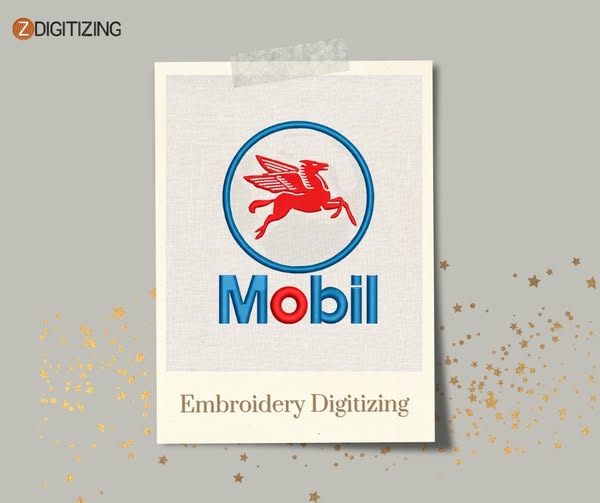Embroidery Digitizing Services: Bringing Precision to Threaded Art

In today’s highly competitive world of custom apparel and promotional products, the demand for precision and personalization has never been greater. Whether it’s a corporate logo stitched on a polo shirt or a detailed monogram on a tote bag, high-quality embroidery begins with one crucial step, which is digitizing.
Embroidery digitizing services are the backbone of modern machine embroidery, turning simple images or designs into stitch-ready files that machines can interpret and execute with pinpoint accuracy. For designers, apparel brands, and even hobbyists, these services open up new possibilities in textile decoration.
What Is Embroidery Digitizing?
Embroidery digitizing is the process of converting artwork (such as a company logo, graphic, or text) into a digital embroidery file using specialized software. This file directs the embroidery machine on how to stitch the design, specifying:
- Stitch type (e.g., satin, fill, running)
- Stitch direction and density
- Thread colors
- Pathing (the order in which parts of the design are stitched)
Contrary to popular belief, this isn’t just a matter of clicking a few buttons. It’s a skilled process that requires an understanding of embroidery techniques, fabric types, and machine limitations.
Why Use Professional Embroidery Digitizing Services?
While there are DIY digitizing software tools available, professional digitizers bring a level of expertise that ensures cleaner, more efficient stitching, and ultimately, a more polished final product.
Benefits of using a professional embroidery digitizing service:
- High-Quality Results: Professionals know how to optimize stitch types and density for different fabrics, ensuring your design looks crisp and professional.
- Time-Saving: Expert digitizers can quickly create production-ready files, speeding up your workflow.
- Reduced Waste: Good digitizing means fewer mistakes, which translates to less wasted material and time.
- Custom Adjustments: Need your logo to fit on a cap and a jacket? Digitizers can adjust for scale, fabric, and surface type.
- Compatibility: They can provide files in multiple machine-compatible formats (like DST, PES, EXP, JEF, etc.).
Who Uses Embroidery Digitizing Services?
A wide range of industries and individuals rely on embroidery digitizing to produce customized embroidered products. Common use cases include:
- Apparel Manufacturers: Adding brand logos, custom patches, or decorative elements to garments.
- Corporate Branding: Stitching company logos on uniforms, hats, or promotional gear.
- Sports Teams: Creating embroidered team logos, player names, and numbers on jerseys.
- Schools and Universities: Custom embroidery on uniforms, bags, and graduation sashes.
- Event Planners: Personalized giveaways for weddings, fundraisers, or conferences.
- Small Businesses and Startups: Offering niche or branded embroidery products.
- Hobbyists and Crafters: Turning personal artwork or lettering into embroidered designs.
Key Features of a Reliable Embroidery Digitizing Service
When choosing a digitizing service, it’s important to evaluate quality, reliability, and customer support. Here’s what to look for:
1. Experience and Expertise
- Look for services with years of experience and a portfolio of past work.
- Expert digitizers understand how to balance design complexity with stitch efficiency.
2. File Format Support
- Confirm that the service can deliver your file in the correct format for your embroidery machine.
- Common formats include: DST (Tajima), PES (Brother), EXP (Melco), JEF (Janome), HUS (Husqvarna).
3. Fast Turnaround Times
- Most providers offer standard and rush options.
- Quick service is essential for commercial clients with tight deadlines.
4. Affordable Pricing
- Pricing may vary based on design complexity, but good services offer transparent, per-design quotes.
- Some also offer bulk pricing for recurring customers or large orders.
5. Design Revisions
- The ability to make revisions is crucial. Look for providers that offer free or low-cost revisions.
6. Customer Support
- Accessible customer service (via chat, email, or phone) makes the whole process smoother.
How the Digitizing Process Works
Here’s a general overview of what to expect when working with an embroidery digitizing service:
- Submit Your Design:
- You provide the artwork in formats like PNG, JPG, PDF, or vector (AI, EPS).
- Specification Gathering:
- You specify the dimensions, fabric type, stitch type, and desired format.
- Digitizing Process:
- A professional digitizer creates the embroidery file using software like Wilcom, Pulse, or Hatch.
- Quality Assurance:
- The file is tested, either virtually or via machine test-stitching, to ensure accuracy.
- Delivery:
- The completed file is delivered via email or download, ready for use in your embroidery machine.
Tips for Getting the Best Results
- Use High-Quality Artwork: Clear, high-resolution images help the digitizer replicate details accurately.
- Communicate Fabric Type: Stitch density and type should be matched to the fabric (e.g., stretchy vs. thick).
- Request Test Stitches: If possible, do a sample run before full production.
- Keep It Simple: Overly complex designs can lead to long stitch times and messy results.
The Future of Embroidery Digitizing
Advancements in artificial intelligence and automation are streamlining the digitizing process, but skilled human digitizers remain irreplaceable for high-quality, creative work. As demand grows for personalized merchandise and short-run custom items, embroidery digitizing will continue to be an essential service for businesses of all sizes.
Conclusion
Embroidery digitizing services play a vital role in translating creative ideas into stitched reality. Whether you’re running a clothing brand, managing corporate apparel, or simply personalizing gifts, working with a professional like ZDigitizing ensures your designs are production-ready and visually impressive.
Choosing the right digitizing partner can make all the difference in achieving clean, consistent, and professional embroidery that elevates your brand or project. As embroidery continues to evolve, one thing remains clear: behind every beautiful stitch lies the precision of expert digitizing.
Also Read: Top Benefits of Using a Thermal Receipt Printer for Faster Billing



